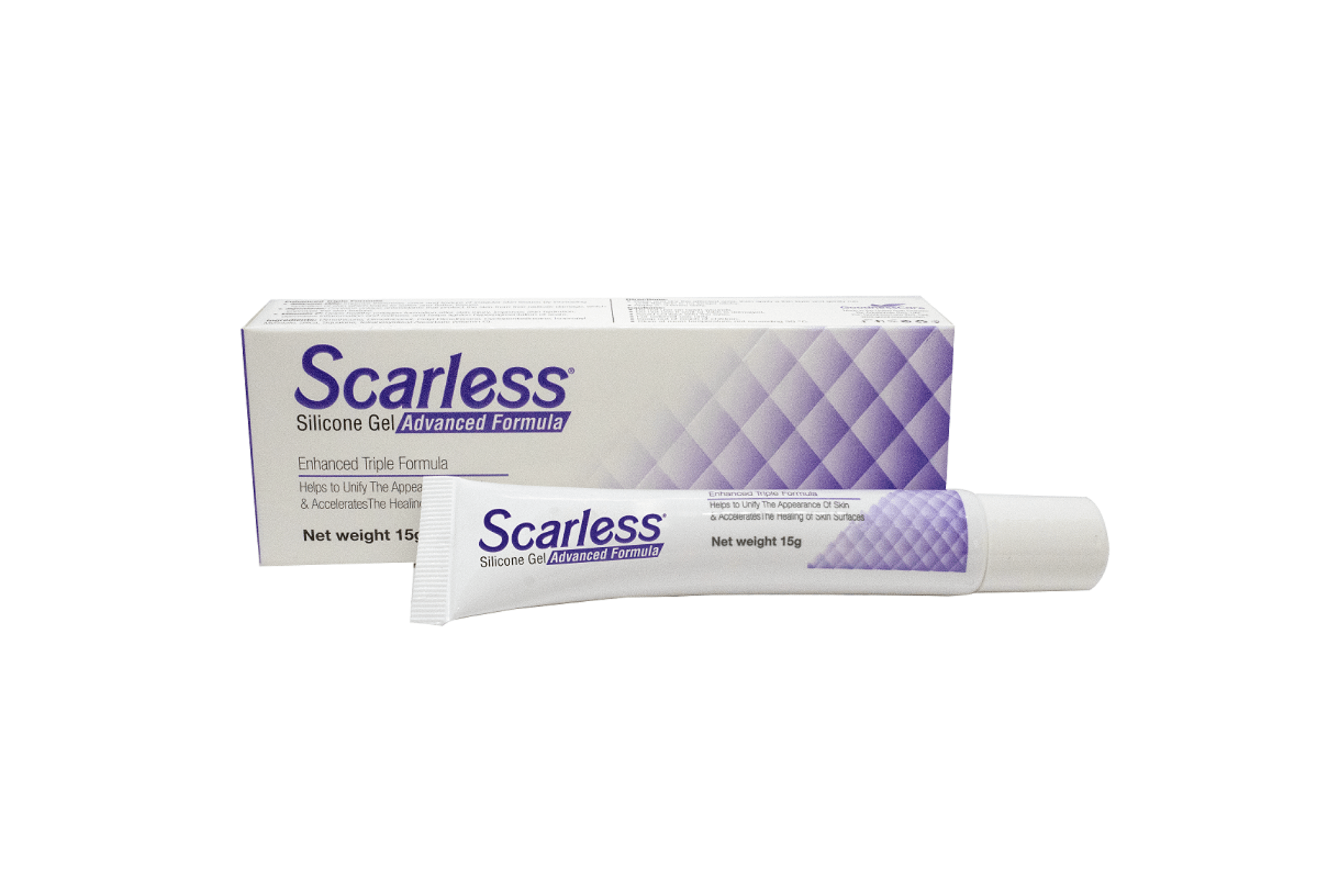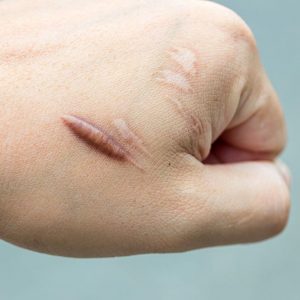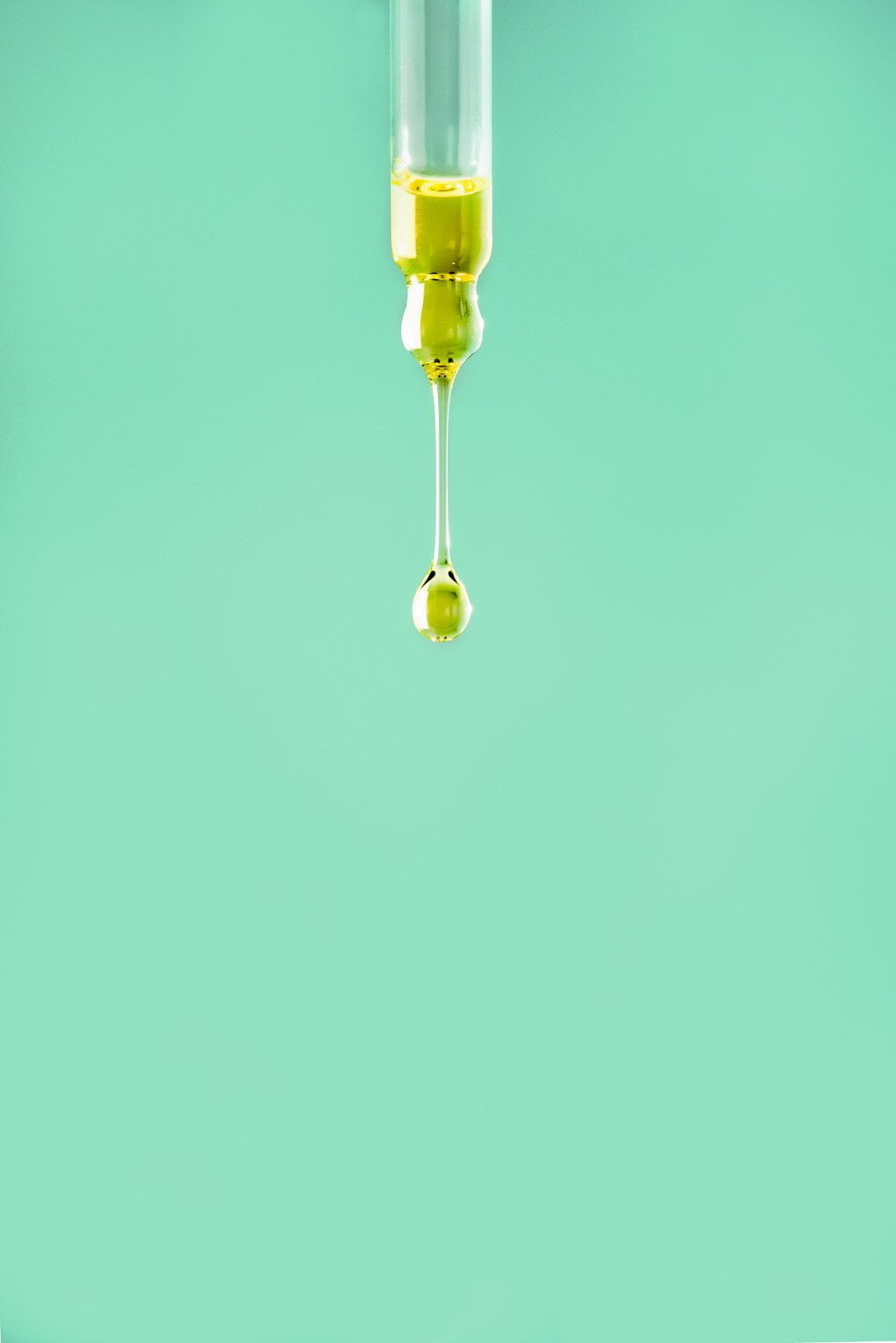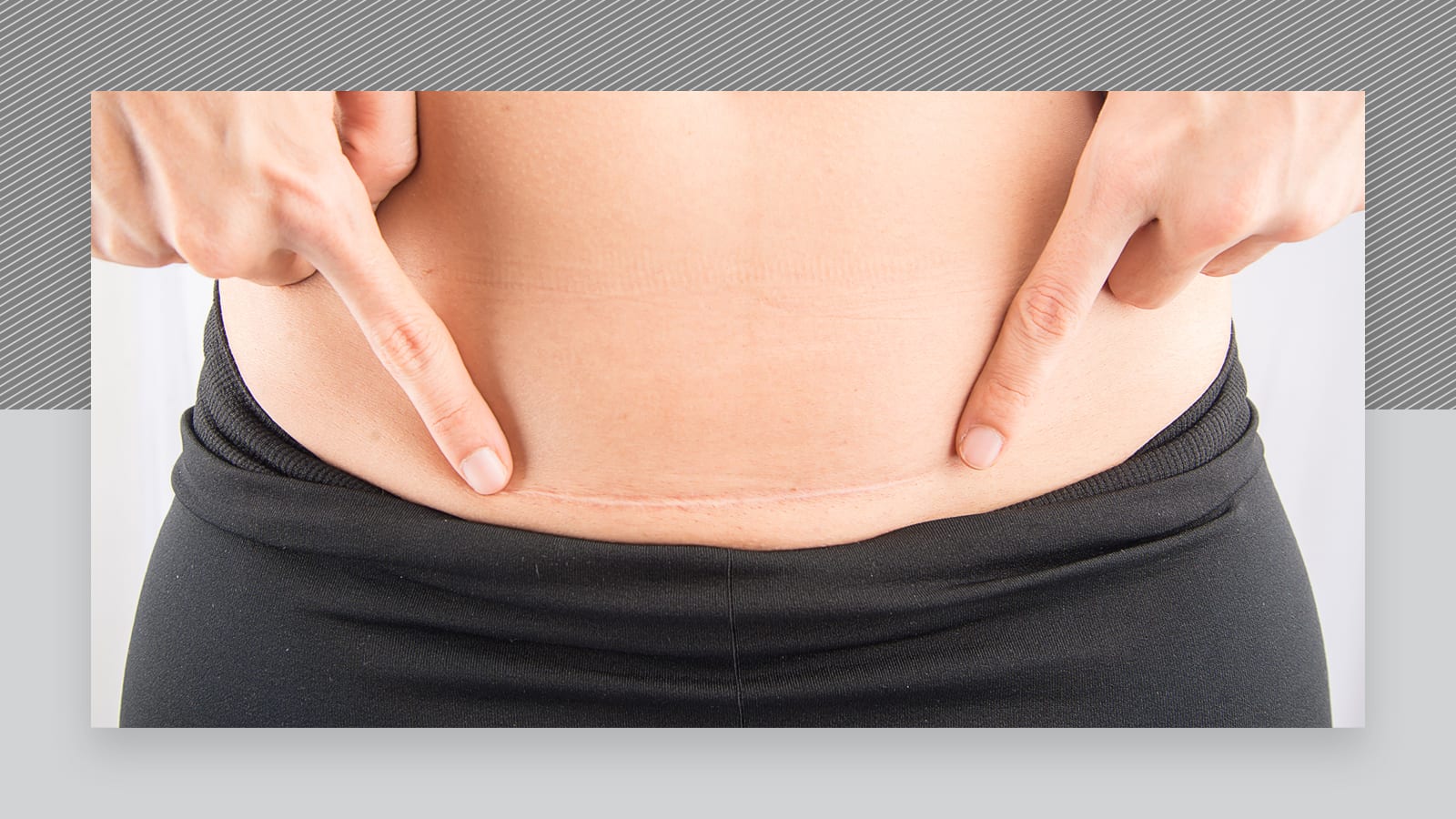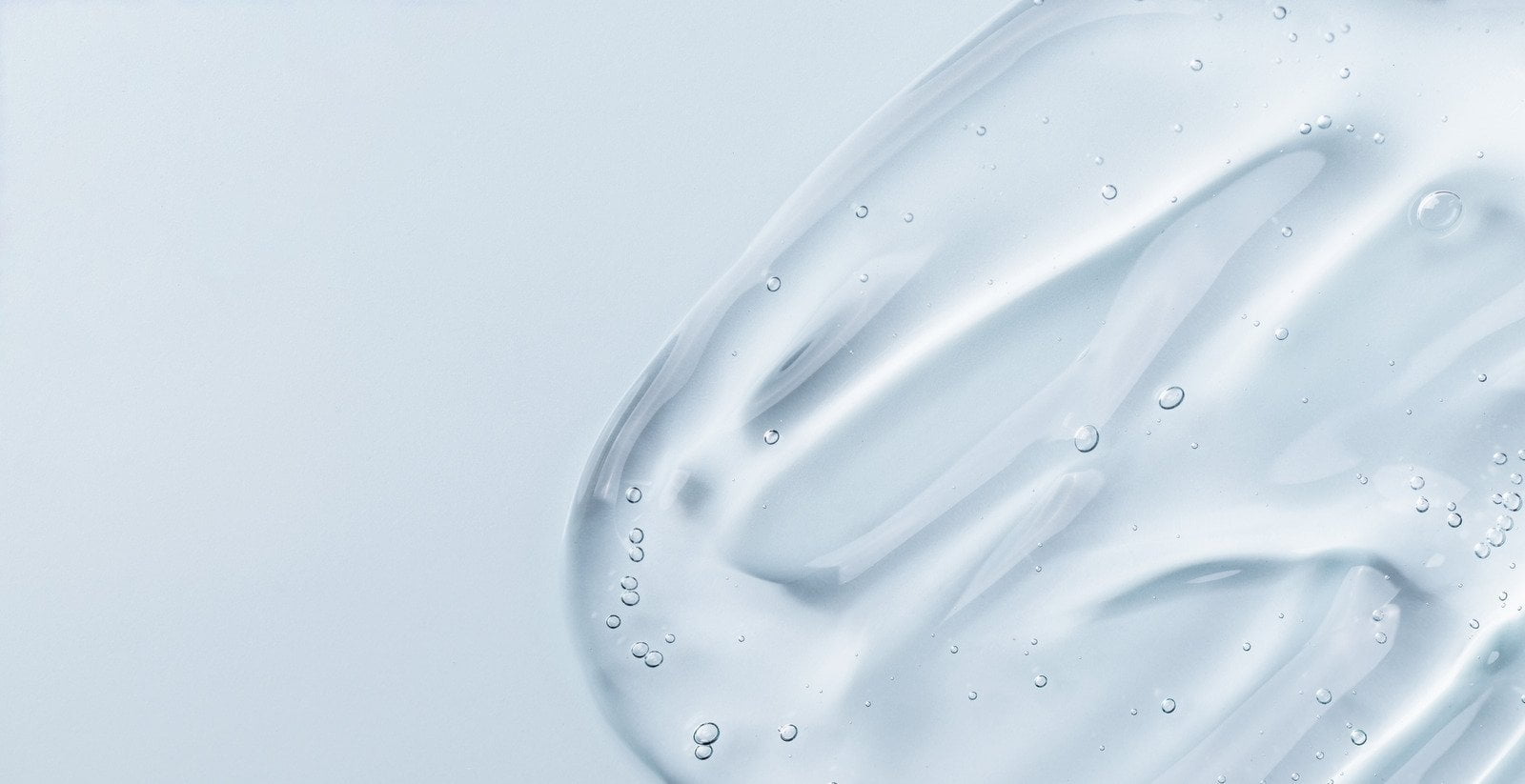Advanced Unique Formula of Silicone Oils, Squalane, and Vitamin C. Helps Reduce Scar Thickness, Redness, and Discoloration. Works for Old and New Scars.
- Triple Action of Silicone Oils, Squalane, and Vitamin C
- Softens & Flattens Raised Scars
- Reduces Redness, Hardness, and Discoloration of Scars
- Relieves itching and discomfort associated with scars
Scarless Silicone Scar Gel is a silicone gel for keloids. It is a scar treatment that helps those with hypertrophic scars that result from trauma, burns, cuts, cosmetic procedures, surgery, or C-section operations. It improves and reduces the scar, whether old or new, restoring confidence and self-esteem. It is safe and well-tolerated.
Key Ingredients
Silicone Oils

Silicone oil is a mechanical barrier that seals the skin over a scar. This helps keep the skin hydrated and prevents the body from producing too much collagen, which can form thick, raised scars. Silicone oil can also help to reduce redness and pain associated with scars.
When applied to a scar, silicone oil can help to:
- Reduce the appearance of redness and inflammation.
- Make the scar flatter and less raised
- Improve the texture of the scar.
- Make the scar less noticeable.
- Protect the scar from infection.
The sooner silicone oil is applied to a scar, the more effective it is likely to be. If you have a scar, you can talk to your doctor or dermatologist about whether silicone oil suits you.
Here are some additional details about how silicone oil works:
- Hydration: Silicone oil forms a thin, invisible film on the skin that helps to trap moisture. This helps to keep the skin hydrated, which is essential for healing and reducing the appearance of scars.
- Collagen production: Silicone oil helps to regulate collagen production. Collagen is a protein that gives skin its strength and structure. Too much collagen can lead to the formation of thick, raised scars. Silicone oil helps to reduce collagen production, which can help to make scars flatter and less noticeable.
- Infection protection: Silicone oil creates a barrier that helps to protect scars from infection. Infection can cause scars to become red, swollen, and painful. Silicone oil can help to prevent infection and speed up the healing process.
Vitamin C

Scarless contains Tetrahexyldecyl ascorbate (THDA), a stable form of vitamin C with antioxidant properties, boosts the immune system and helps heal, fade, and prevent scars. THDA helps regulate healthy collagen formation, reducing the size and appearance of scars. It also helps to reduce scar pigmentation. Additionally, THDA helps to combat free radicals, which can cause severe and permanent cellular damage to the skin.
Benefits of THDA:
- Antioxidant properties: THDA is a powerful antioxidant that can help protect the skin from damage caused by free radicals. Free radicals are unstable molecules that can damage cells and lead to premature aging, wrinkles, and age spots. THDA can help neutralize free radicals and prevent them from damaging the skin.
- Immune system boost: THDA can also help boost the immune system. The immune system is responsible for fighting off infection and disease. THDA can help strengthen the immune system and make it more effective at fighting infection.
- Scar healing: THDA can help to heal scars. Scars are formed when the body repairs damaged tissue. THDA can help to speed up the healing process and reduce the appearance of scars.
- Scar fading: THDA can also help to fade scars. Scars are often darker than the surrounding skin. THDA can help to lighten the pigmentation of scars and make them less noticeable.
- Free radical protection: THDA can help to protect the skin from free radical damage. Free radicals can cause premature aging, wrinkles, and age spots. THDA can help to neutralize free radicals and prevent them from damaging the skin.
Squalane

Squalane, derived from olive oil, is a powerful antioxidant with immune-stimulating properties, a good emollient, and a natural moisturizer. It is similar to the skin naturally producing sebum, so the skin quickly absorbs it, does not leave a greasy residue, and does not clog skin pores.
Benefits of Squalane include:
- Hydration: Squalane helps to keep your skin hydrated by locking in moisture. This helps improve the skin’s overall appearance, making it look more plump and youthful.
- Protection: Squalane helps protect the skin from the sun’s harmful UV rays. It also protects the skin from environmental damage, such as pollution and wind.
- Scar Softening: Squalane helps to soften scars by reducing inflammation and promoting collagen production. This helps improve the appearance of scars and makes them less noticeable.
How Scarless Works?
Scarless is a 97% silicone gel used to soften, flatten, and reduce the appearance of raised scars. It is odorless, water-resistant, and discreet, making it a good option for facial and pediatric scars. Scarless creates a protective barrier over the scar, which helps reduce inflammation and promote collagen production. This improves the appearance of the scar and makes it less noticeable.
Details about how Scarless works:
- Reduces inflammation: Scarless helps to reduce inflammation, which is a significant factor in scar formation. Inflammation can cause the scar to become red, raised, and itchy. Scarless helps to reduce inflammation by creating a barrier over the scar that blocks out irritants and allergens.
- Promotes collagen production: Scarless helps to promote collagen production, which helps to plump up the scar and make it less noticeable. Collagen is a protein that gives skin strength and elasticity. Scarless helps promote collagen production by creating a moist environment conducive to cell growth.
- Protects the skin: Scarless helps to protect the skin from irritants and allergens.
About Scars
Scars are different from normal skin. They have fewer hair follicles, sebum, and sweat glands. They also lack the pigments that give skin its natural color, which can make them stand out. Scars are also less elastic and supple, making them feel tight. The formation of new blood vessels causes the redness of a fresh scar. This redness fades over time, leaving behind lighter-colored scar tissue.
The visibility of a scar depends on many factors, including the severity of the injury, the type of treatment the wound receives, and whether the wound can heal properly. Age, health, and ethnicity also play a role in scar formation. Effective medical scar treatment can also help to reduce the visibility of scars.
Factors that can affect the visibility of scars:
- The severity of the injury: The more severe the injury, the more likely it is to result in a visible scar.
- Type of treatment: The type of treatment the wound receives can also affect the visibility of the scar. For example, scars left to heal on their own are more likely to be visible than scars treated with stitches or staples.
- Whether the wound is allowed to heal correctly: Scars are more likely to be visible if the wound is not allowed to heal correctly. This can happen if the wound is infected or not kept clean and covered.
- Age: Scars are more likely to be visible in young people than in older people. This is because young skin is still growing and developing, which can make scars more noticeable.
- Health: People with certain health conditions, such as diabetes or psoriasis, are more likely to develop visible scars. This is because these conditions can affect the way skin heals.
- Skin Color: People with darker skin color are more likely to develop keloid scars.
Scar Types
Hypertrophic Scars

Hypertrophic scars are a type of scar that forms after the healing of a wound. They are raised, red, and itchy and may last several months. However, over time, they will fade and become paler and flatter.
Hypertrophic scars are caused by an overproduction of collagen in the skin. Collagen is a protein that helps to give the skin its strength and structure. When the body produces too much collagen, it can lead to the formation of a raised scar. Hypertrophic scars are most common in people with darker skin tones. They are also more likely to form in areas of the body prone to friction, such as the elbows, knees, and shoulders.
Keloid Scars

Keloids are a type of scar that grows beyond the boundaries of the original wound. They can be raised, red, and itchy and may be painful. Keloids can form anywhere on the body but are most common on the chest, shoulders, back, and ears. Overproduction of collagen causes keloids. Collagen is a protein that helps to give the skin its strength and structure. When the body produces too much collagen, it can lead to the formation of a keloid. Keloids are more common in people with darker skin tones. They are also more likely to form in people with a family history of keloids.
Atrophic Scars

Atrophic scars are small, indented scars lower than the surrounding skin. They are formed when the skin does not heal properly, usually after acne or chickenpox. This can happen when the body does not produce enough collagen, a protein that gives skin its strength and structure. Atrophic scars can be unsightly and can make people feel self-conscious.
Contracture Scars

Contracture scars are a type of scar that forms when the skin heals abnormally. They are tight and inflexible, and they can limit movement. Contracture scars are most common after burns but can also form after other injuries, such as surgery or trauma.
Contracture scars are caused by an overgrowth of collagen, a protein that gives skin its strength and structure. When the body produces too much collagen, it can lead to the formation of scar tissue. Scar tissue is thicker and stiffer than normal skin and can limit movement.
Contracture scars can be unsightly and can make people feel self-conscious. They can also limit movement and make it difficult to perform everyday activities.
Cesarean Section Scars (C-section scars)

A C-section scar is a line that forms on the abdomen after a cesarean section. It is usually about 4 to 6 inches long and 1/8 of an inch wide. The scar may itch during the first few weeks of healing. Occasionally, irregular (hypertrophic) scars can form as a C-section incision heals. Hypertrophic scars are raised and red and may be wider than the original incision. They are more common in people with darker skin tones.
Scarless Silicone Gel FAQs
For full details of all the FAQs related to Scarless Gel, please check out the Scarless FAQs page.
Scarless Silicone Gel Availability
Scarless Silicone Gel is available through our partners in the following countries: Jordan, Palestine(West ank & Gaza), Kuwait, Libya, Qatar, Yemen, South Sudan, Mauritania, UAE, and Armenia.
If Scarless is unavailable in your country, you can order it online and receive it within a few days. We ship to all countries.
If you are a distributor interested in partnering with us, please contact us, and we will be happy to provide you with the details.

